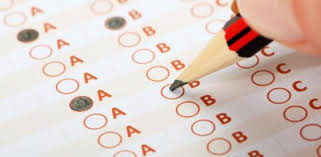Psychometrics Tests and the Importance of Item Writing
Posted on
 When you are required to take a psychometric test, your immediate reaction might be “What kind of test? Will there be True or False answers?”. The answer to this depends on whether the test you are taking is to assess your ability or personality. Ability tests are usually timed and contain an absolute answer; personality tests are scored differently, and the focus is more about understanding your preferences. Testing is a crucial part of people selection, development, careers advice, placement opportunities, and their use is continuously developing.
When you are required to take a psychometric test, your immediate reaction might be “What kind of test? Will there be True or False answers?”. The answer to this depends on whether the test you are taking is to assess your ability or personality. Ability tests are usually timed and contain an absolute answer; personality tests are scored differently, and the focus is more about understanding your preferences. Testing is a crucial part of people selection, development, careers advice, placement opportunities, and their use is continuously developing.
For testing to be successful, the test administrator or psychology professional must be able to determine what kind of test battery, test format, and objectives would be utilized. There are a lot of standardized tests available in the market. But there will always be a need to develop specific tests for targeted populations.
The key is to develop or write items that would address your needs as a psychology professionas. What are the basic guidelines for item writing?
1. Clearly define what you want to measure.
It is important that test content is relevant to what personality traits or skills you want to measure. Careful planning and strategy are essential in this process. Domains and sub-domains must be clearly defined; and test items must be reflective of what it measures.
2. Generate an item pool.
In the initial phase of item writing, you need a substantive number of item so you can trim it down to specific item reflective of what you want to measure. In practice, if you are targeting to have a 4-domain test with 10 items each, you must come up with at least 30 items for each domain. You will appreciate the significance once you run statistical analysis on this part.
3. Avoid sentences that are too long.
In this aspect, you must consider the reading level of your target audience. If your item is too long, comprehension could be a factor for your respondent to answer honestly. It is important to construct simple and concise items.
4. Limit negatively worded items.
It is unavoidable that there will be respondents who tend to simply agree with statements. So, it’s important to make neutral statements instead of leading ones.
5. Construct specific items.
Avoid statements that tell two different things in one item. This may cause confusion on the response therefore, validity of your test is compromised. It’s necessary that you keep an item concise and specific.
(Written by Christine Marie Dupo)
References:
Anastasi, A., & Urbina, S. (1997). Psychological testing. Upper Saddle River, N.J: Prentice Hall.
Kaplan, R. M., & Saccuzzo, D. P. (2001). Psychological testing: Principles, applications, and issues. Pacific Grove, Calif: Brooks/Cole Pub. Co.

Add a comment: